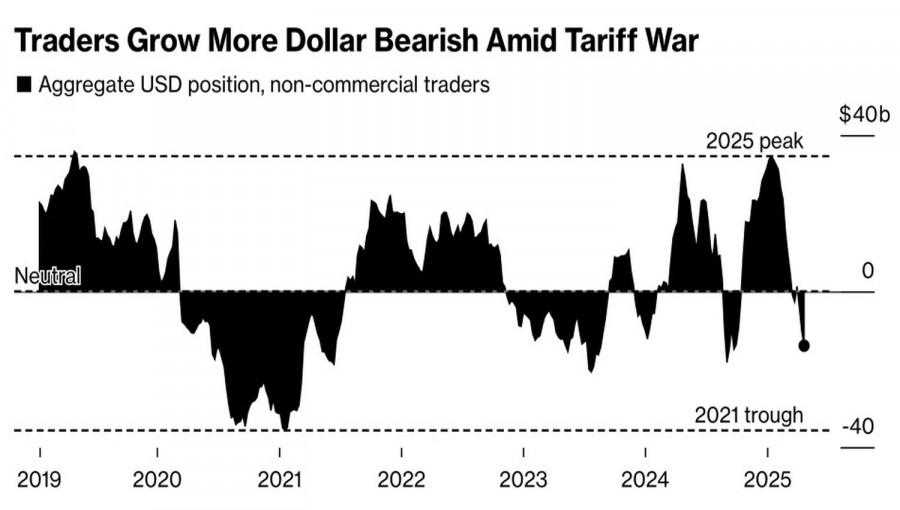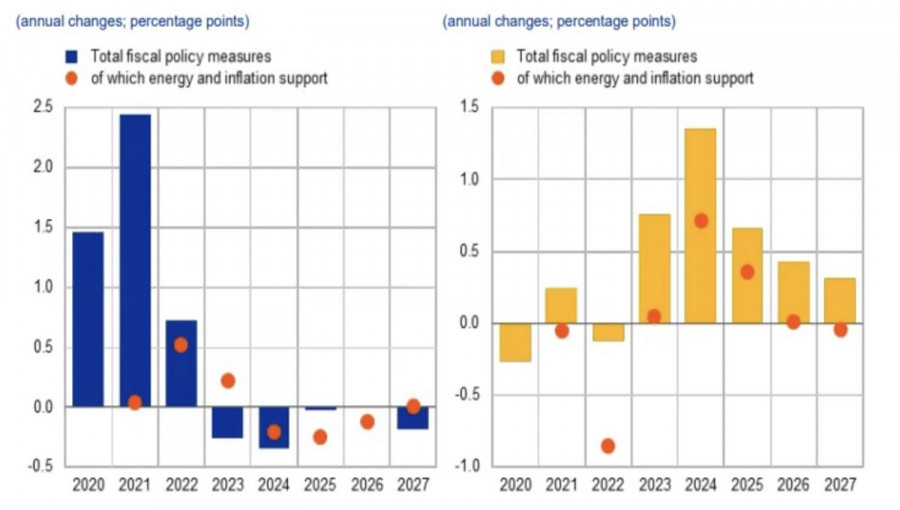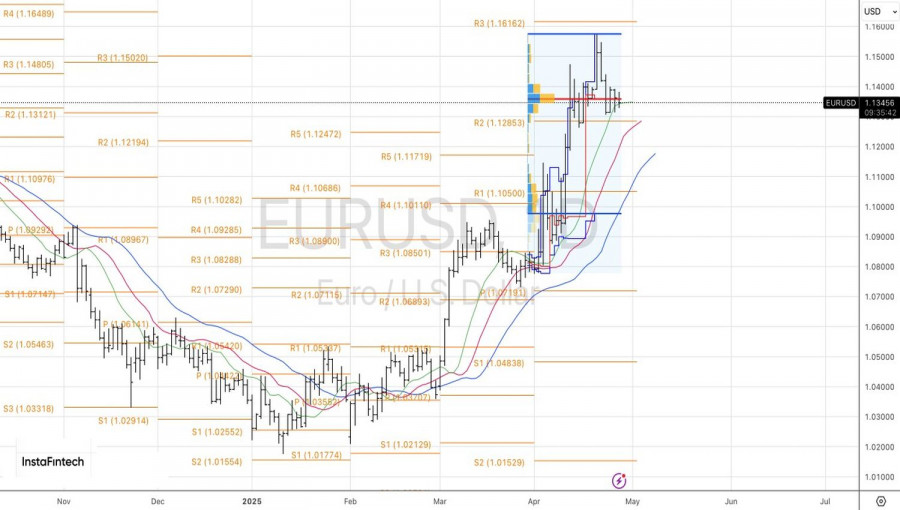See also


 28.04.2025 04:23 PM
28.04.2025 04:23 PMIs the US dollar overvalued? Bank of America thinks so. The bank points out that in previous cycles, when the USD Index peaked in the mid-1980s and early 2000s, the result was a major downward trend, with the greenback falling by 25–30%. Currently, foreign investors hold $22 trillion in US assets, and a sell-off would be a nightmare for EUR/USD bears. However, not everyone shares this outlook.
Credit Agricole believes the US dollar sell-off is overdone. According to the bank, investors are overlooking negative factors for EUR/USD, such as the harmful effects of trade wars on the eurozone economy, the gradual stabilization of the political situation in the US, and the excessive bearish positions against the US dollar. Indeed, speculative players—asset managers and hedge funds—have spent recent weeks almost exclusively selling the greenback.
USD speculative dynamics
Banks and investment firms hold differing views on the fate of EUR/USD, which has contributed to the pair consolidating within a narrow trading range. Notably, Trump's first 100 days in office resulted in the worst performance for the US dollar on record even breaking Richard Nixon's negative record from the 1970s.
One factor behind the dollar's downward trend has been capital outflows from North America to Europe. Initially, investors were spooked by the White House's large-scale tariffs on "American Liberation Day" and sold the EuroStoxx 600. However, now, they are returning to the index, confident that Washington-Brussels trade talks will end positively. Continued ECB monetary easing, combined with German fiscal stimulus, is expected to further fuel the rally in European equities.
According to the ECB, Donald Trump's tariffs are projected to accelerate eurozone inflation by 0.7 percentage points in 2025, by 0.4 in 2026, and by 0.3 in 2027. Without these tariffs, the region would once again face deflation for this year and the next two. As it stands, consumer prices are forecast to grow by 2.3%, 1.9%, and 2%.
Eurozone Inflation without and with tariffs
Such CPI dynamics enable the European Central Bank to continue easing monetary policy. Under normal conditions, expectations of a deposit rate cut would weigh on the euro. However, when Forex pricing is driven by capital flows, monetary expansion supports both European stock indices and EUR/USD.
Technically, the daily chart for the main currency pair shows continued short-term consolidation within the 1.1315–1.14 trading range, forming the Surge and Shelf pattern. Placing pending buy orders on EUR/USD above 1.14 and sell orders below 1.1315 remains a relevant strategy. The main thing is not to open too many short orders.
You have already liked this post today
*The market analysis posted here is meant to increase your awareness, but not to give instructions to make a trade.



